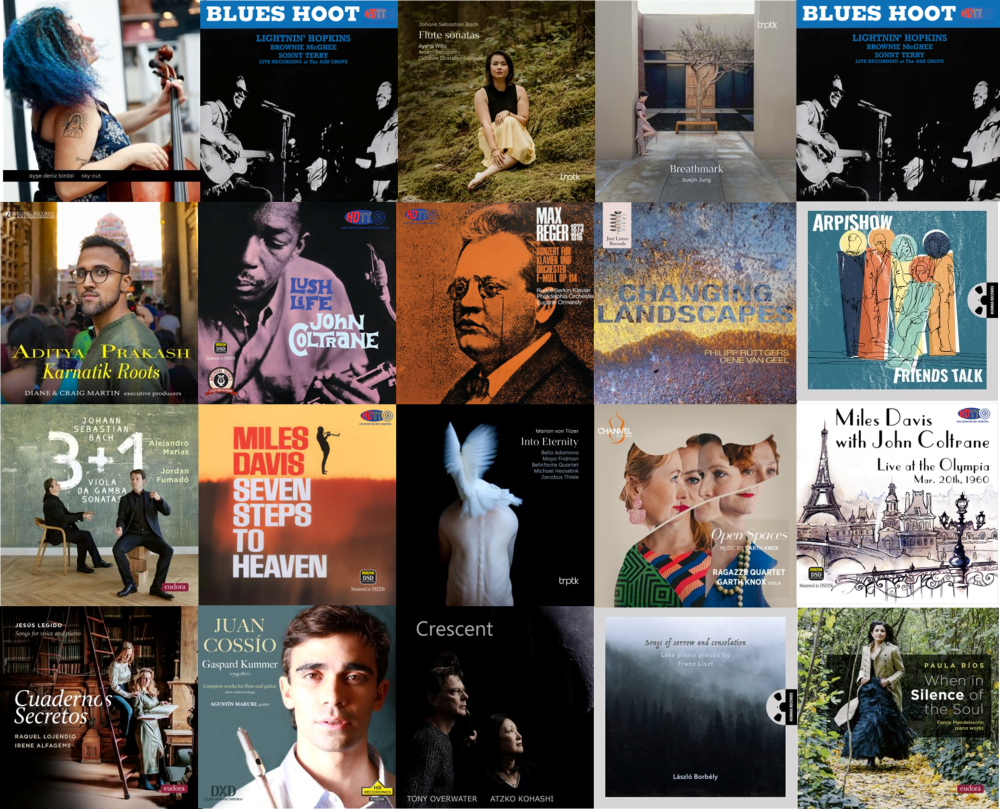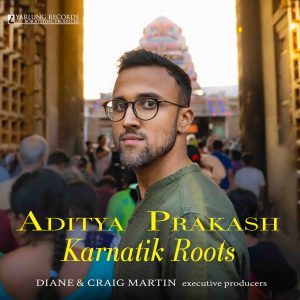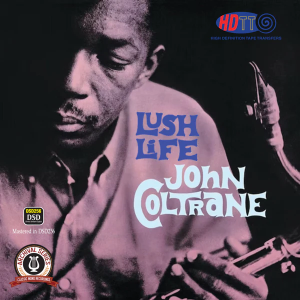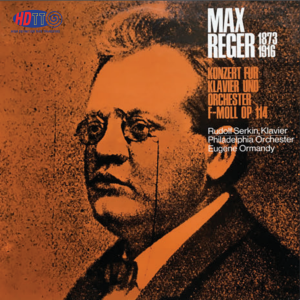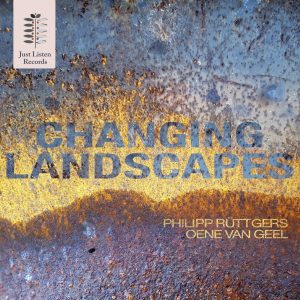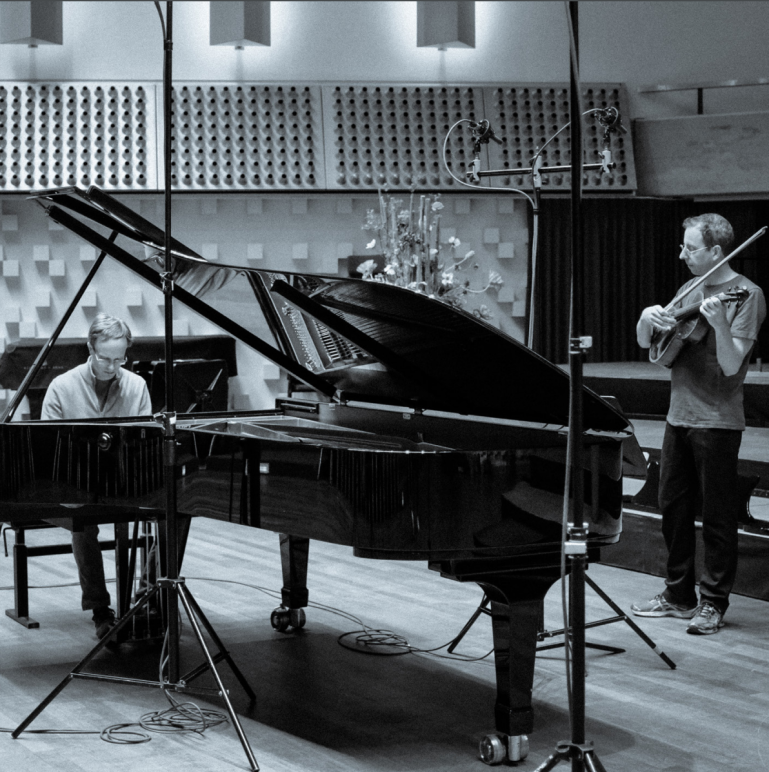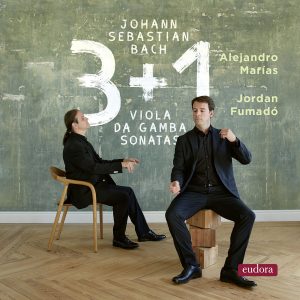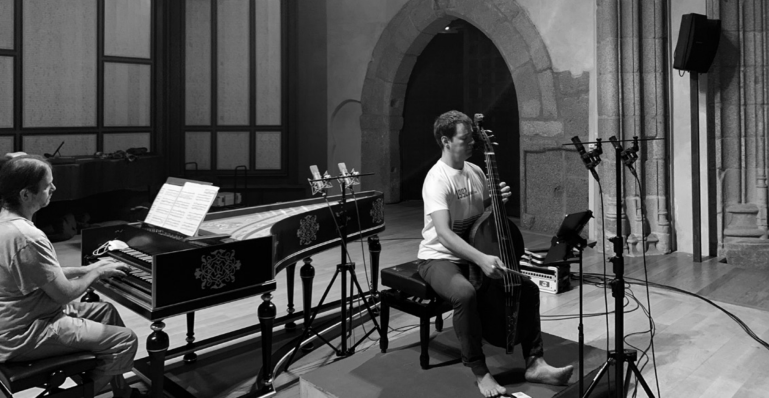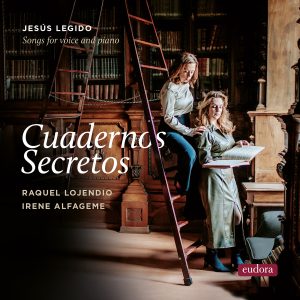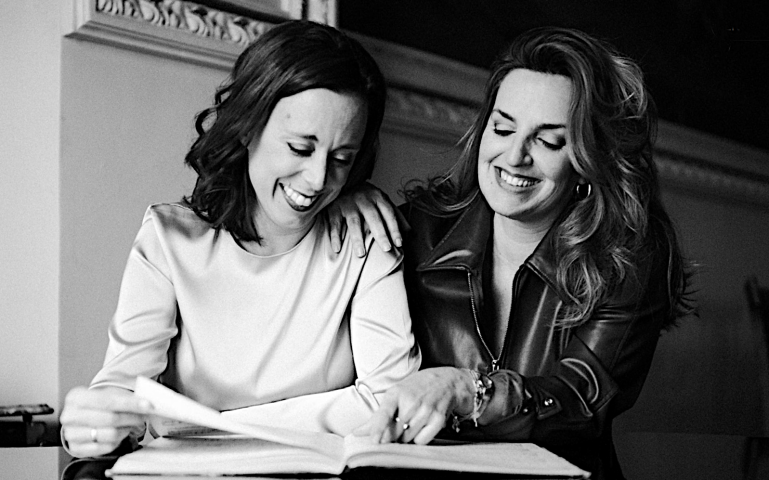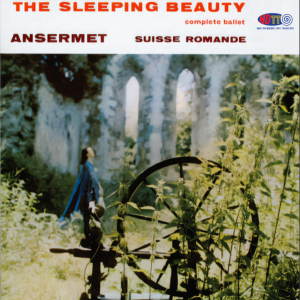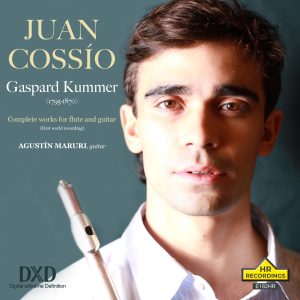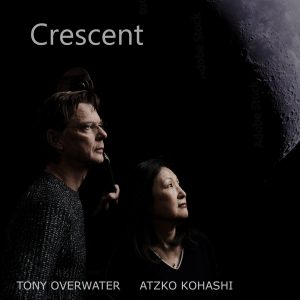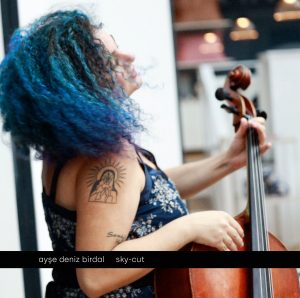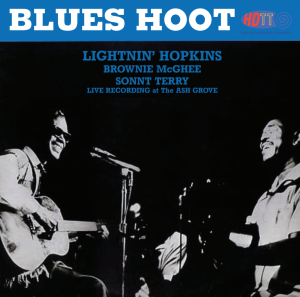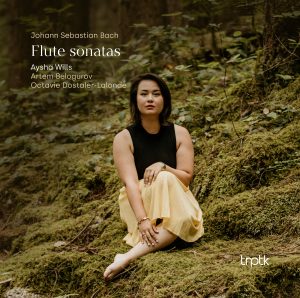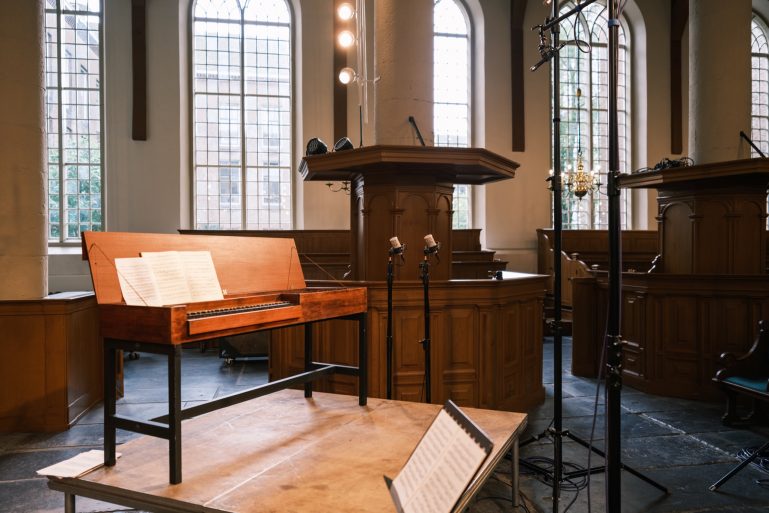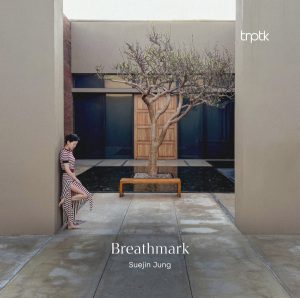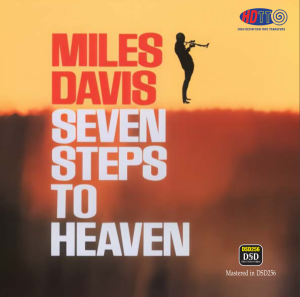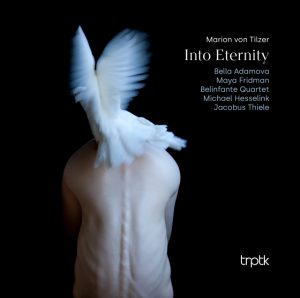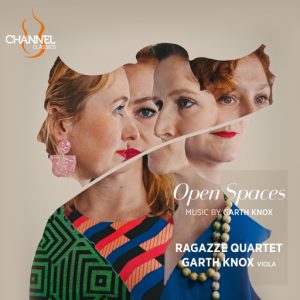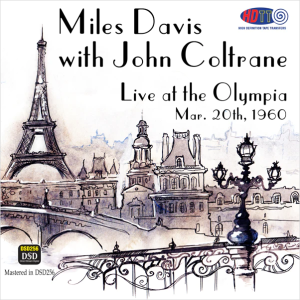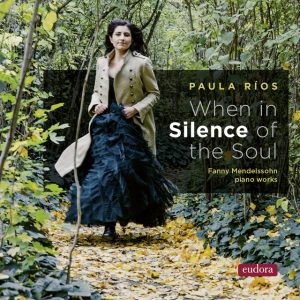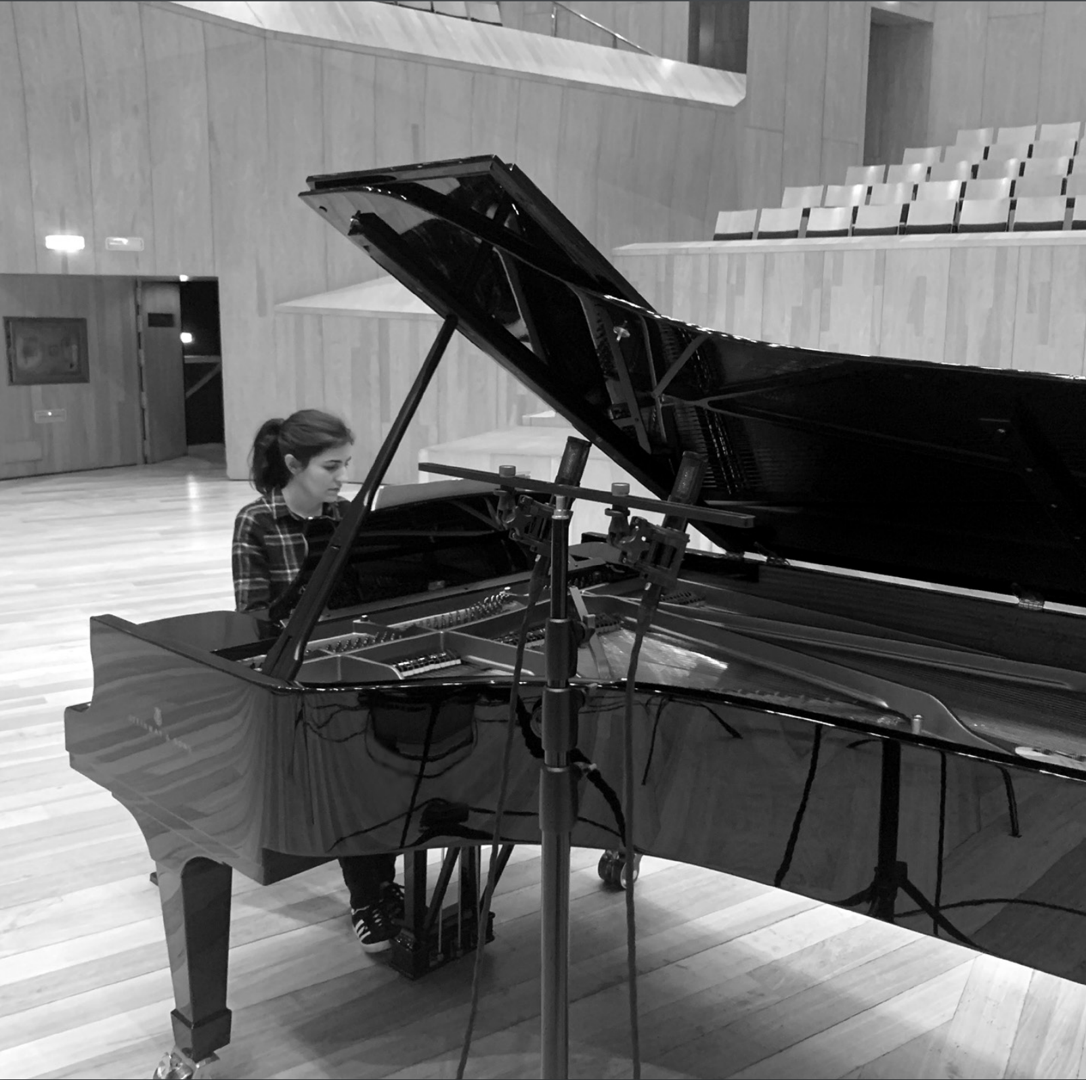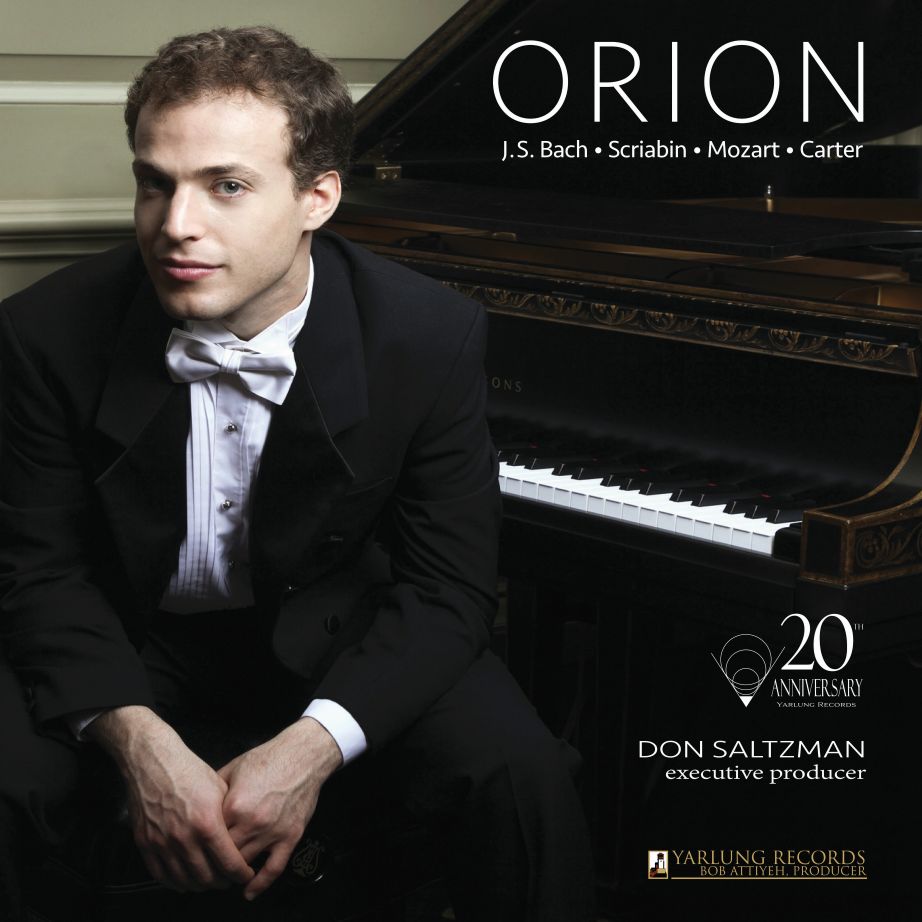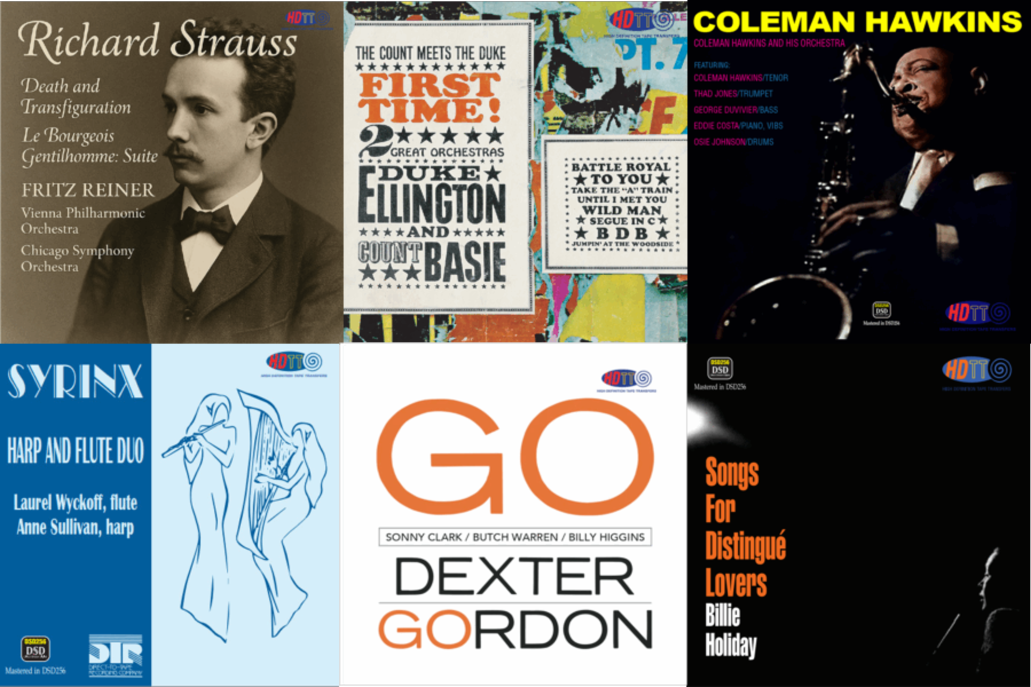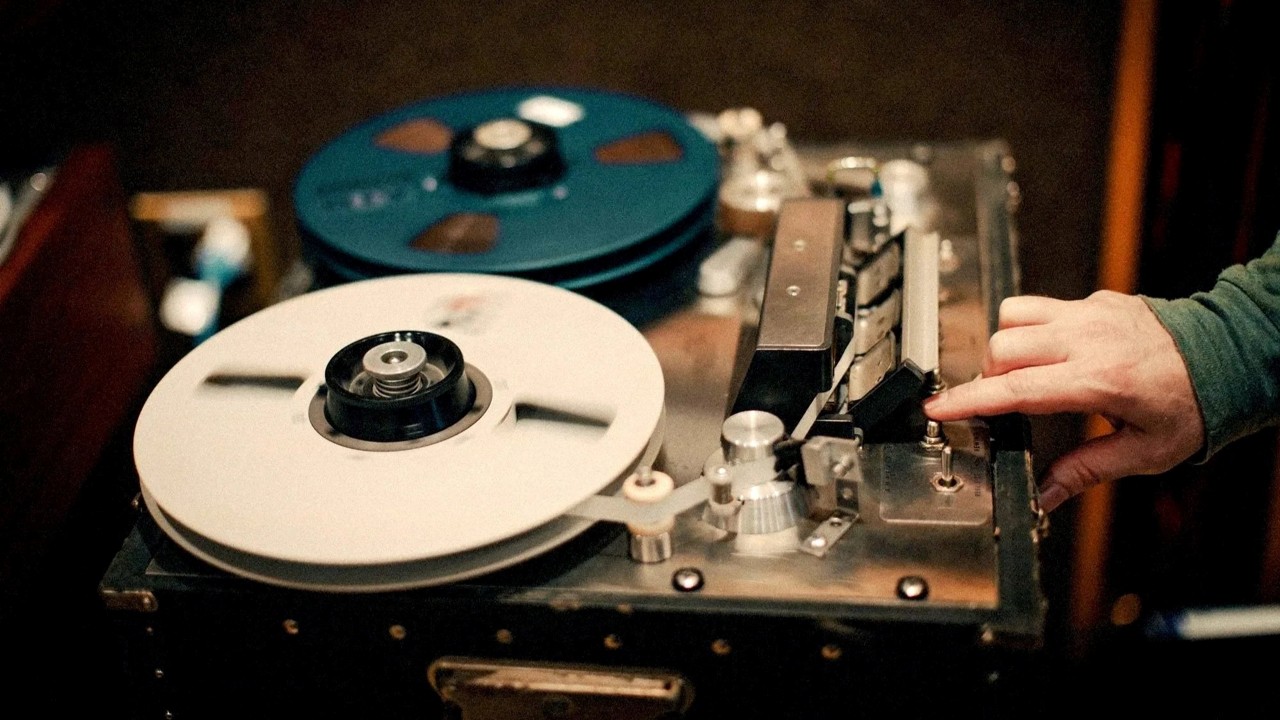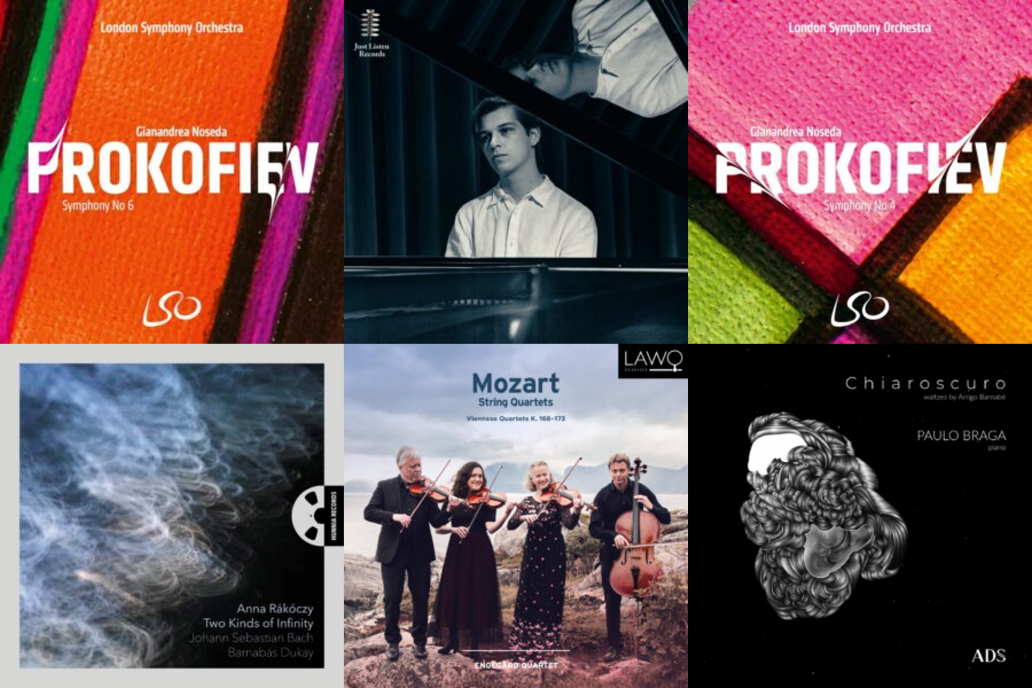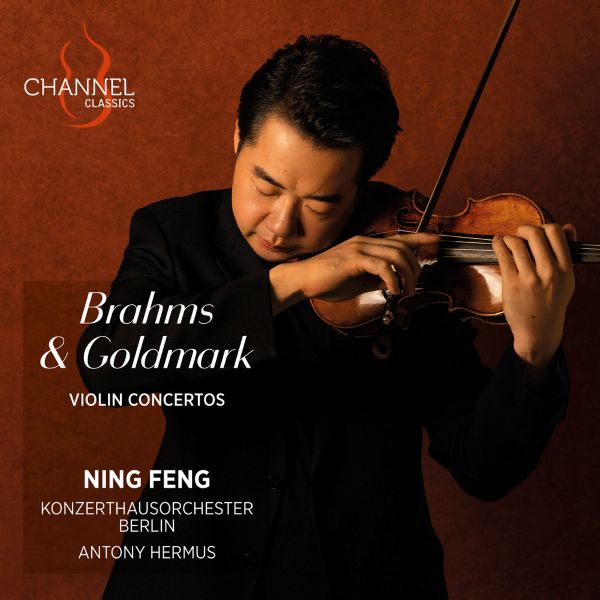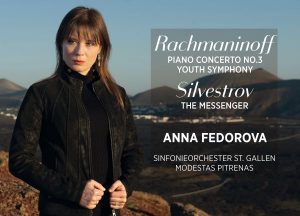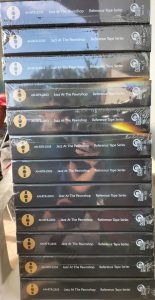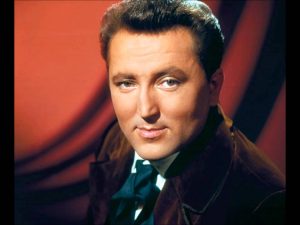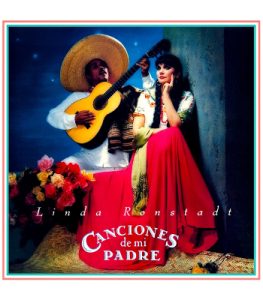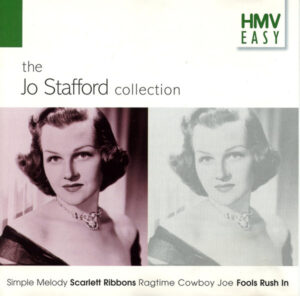In this edition of Notes on Recent Finds, I offer you a diverse set of albums I've been enjoying and replaying frequently. There is no theme to this assemblage other than I like them, I think they are all very nicely performed and recorded, and I find the music they contain most engaging. I hope you will enjoy the explorations!
Also, check out my Notes for the Curious at the end of the article for some thoughts on selecting formats and resolutions for purchase.
Karnatik Roots, Aditya Prakash voice, with Kamalakiran Vinjamuri, violin, Rajna Swaminathan, mridangam, and Vini Sundaram, tambura. Yarlung Records, 2023 (Pure DSD256, Stereo, MCh) HERE
When Bob Attiyeh of Yarlung Records announces a new release, I come running. And I am never disappointed. The artists, the music and the performances are always a treat that I find myself wanting to hear again and again. I don't know how Bob does this with such consistency over the many years I've listened to his recordings. He and his network of music appreciating supporters are just a marvel of artist discovery.
And, as good as the performers and music always are in these Yarlung releases, it is the exceptional sound quality of the recordings that brings me back. The sound quality is always at the top of the world. Bob's commitment to making fully natural acoustic recordings, using the best equipment and a minimal numbers microphones, in venues with beautiful acoustics, like the wonderful Samueli Theater at Segerstrom Center for the Arts in Costa Mesa where this music was recorded, is a special factor I treasure and for which I will sing his praises to the sky.
In this album, the excellent Aditya Prakash performs some of his favorite ragas in the classical Karnatik musical tradition of South India with a purely acoustic recording. As adventurous and "crossover" as Prakash's successes may be, they have always been firmly anchored in this traditional music. You may be familiar with his jazz-infused Karnatik blend of crossover performances with his Aditya Prakash Ensemble, as heard on releases such as Diaspora Kid or his concerts on National Public Radio. It is a pleasure hearing him step into these more classically traditional, purely acoustic, performances in this album for Yarlung.
The more I listen to this album, the more I enjoy it. It becomes addictive. Also, Bob Attiyeh was very conservative in his gain control when recording this. As a result, it is very clean, just no peak distortions, and it's at a bit of a lower volume level than other recordings you may be playing. Don't hesitate to turn your volume control up a few notches—I did on my third listen and found the additional bit of volume very rewarding.
If you are familiar with Karnatik raga, this album is a no-brainer to add to your music library. If you are not, this is a great place to dip your toe into music from a great tradition that may be new to you. Performances don't get much better than you will find here. If you are a sound junkie, like me, the excellence of the sound quality will be eminently rewarding entirely on its own.
Lush Life, John Coltrane with Paul Chambers, Al Heath, Art Taylor, Red Garland, Donald Byrd, et al. HDTT 1958, 2023 (Pure DSD256) HERE
Most of us will never have heard Lush Life sound this terrifically good. It’s alive! And ever so natural sounding. This is a wonderful transfer from a 15ips 2-track tape, and now it is a treasure in my music library. Recorded in 1957 and 1958 by Rudy van Gelder and released by Prestige in 1960.
Yes, it is mono. But the sound quality is stunningly good. Rudy's well known challenge with recording pianos is evident in this release, but that's the only disappointment. The other instruments sound beautifully natural and real. I don't have a reissue in my digital music library that sounds nearly this good, and my comparison is with two very nice SACDs (US and SHM) plus a 24/96 dub whose source must be left unspoken. Bob Witrak's transfers continue to outshine the commercial releases.
Reger Piano Concerto in f - Rudolf Serkin, Eugene Ormandy, The Philadelphia Orchestra. 1959, 2023 HDTT (DSD256, DXD) HERE
This is quite a powerful performance by Rudolf Serkin. Recorded in 1959 with excellent sound quality on this transfer. This is an excellent example showing that there are some really nice sounding recordings within the Columbia catalog. Serkin and Ormandy perform this work like "hand in glove"—great synergy of interpretation with neither seeking to overshadow the other. Of course, the usual Columbia tendency to spotlight their soloist shows up here from the original recording. The piano just occupies a different acoustic space in front of the orchestra. But this is just the nature of Columbia's artistic choice in how their concerto recordings were mixed. But, nothing detracts from the 4playing of both Serkin and the Philadelphia Orchestra strings, which are themselves a unique sound. HDTT's transfer is excellent: clear, clean, highly detailed, and transparent, with very little to no noise. Bob Witrak is simply a genius and getting from his tapes the purity of sound that he achieves here. Well done!
Changing Landscapes, Philipp Ruttgers, piano, and Oene van Geel, violin. Just Listen Records 2019 (DSD256, DXD) HERE
I am a diehard devotee of the work Jared Sacks is doing with his jazz and world music recordings on Just Listen Records. I've let escape any earlier mention of this album by pianist/composer Philipp Ruttgers (1981) and composer/viola/quintone player Oene van Geel (1973). Shame on me! Because here we have some nicely innovative music very much in the jazz genre, with flecks of world music influences, and a soupcon of classical, but all very unique in sound quality overall.
The various pieces are musically engaging and innovative, with excellent playing on both piano and quintone, and with subtle complementary effects added by Ruttger to the piano on various cuts. Ruttger applies muted strings, percussion on the cast iron frame, paper vibrations on the string, and ambient sounds created with the "Microphonic Soundbox" which employs contact microphones and can yield different sound elements that you can play with your hand but also with a bow. All very interesting in combination.
All of the works are composed by Van Geel and Ruttgers. While there are only two works identified as improvisations, the entire album has an improv feeling about it. Perhaps this comes from the freedom of the recording process that Jared led them through—no headphones, no isolation booths, playing freely together in a natural acoustic venue and without obsessing over listening to individual takes, but, instead, simply playing together more than listening.
Recording session in Studio 1, MCO, Hilversum the Netherlands, September 2018
Ruttgers describes the process in the enclosed booklet, "To date, I have often made recordings in a studio in separate rooms and headphones... This project was different from the start... We played without amplification and without headphones... With Jared we made a plan to play much more than to listen, and that we were not going to make choices on the day in terms of takes. For me a surprise because I was used to making certain choices in the studio based on listening back to the recorded takes. I trusted Jared and we took the rest of the day and the day that followed, without really listening back. A few weeks later Jared forwarded the recordings and I was positively surprised! This is a very special sound. I hear every little detail of what I played then. The combination with Oene also comes across beautifully. The space of the MCO carries the sound. I was and still am very impressed with Jared’s way of recording."
And the resulting sound Ruttgers describes is classic Jared Sacks. Very natural, lovely balance between direct sound from the instruments and reverberant sound from the room, piano nicely spaced from the microphones to allow the sound to bloom, both instruments nicely balanced one to the other in this nice acoustic space, beautifully open and transparent.
Most enjoyable and recommended.
3 + 1 Viola da Gamba Sonatas, Alejandro Marías, Jordan Fumadó. Eudora Records 2023 (Pure DSD256, Stereo, MCh) HERE
This is a lovely recital of some of Bach's most ingratiating music. Excellently performed in a very satisfyingly understated manner. Nothing flashy, nothing excessive, just expertly performed with an ease and relaxed enjoyment of the music by the performers that I find delightful.
These are works by the mature Bach: BWV 1027 - 1029 and 1030a, probably dating from the late 1730s and early 1740s. Here Bach is completely at ease, thoroughly in command, with nothing to prove. He is composing music for the chamber, to be played by expert musicians at court.
Often these works are performed on modern instruments: cello and piano. Here, they are performed on the period instruments for which these works were originally composed. As a result of the period instruments (and historically informed performance practice), the timbre is dramatically, drastically, different than with modern instruments. The sound quality is more subdued, rounder, richer in texture and reverberation. It requires of the listener a more relaxed and receptive hearing because none of these will jump out and grab you by the throat as would a a modern instrument performance by, say, Yo Yo Ma or Janos Starker (impeccable as both may be). Instead, think of what you might expect for the instrument sound quality from Sigiswald Kuijken or Jordi Savall (to whom viola da gamba artist Alejandro Marías has been compared), if you know these masterful period instrument performers. And, the timbre of the plucked strings of the harpsichord and the timbre of the bowed gut strings of the viola da gamba complement each other perfectly—they are completely synergistic.
Have I said that I get excited about period instrument performance? Well, this recording is an example of why.
To top it off, the sound quality is as transparent, open and resolved as one might possibly wish to hear. There is no percussion, no brass, no tinkly bright things or deep things that go boom to grab you attention. For many this will not be an audio spectacular. But it is. Just in a different way. The recording's spectacular excellence lies in it's superbly captured timbre, balance between performers, balance of direct and reflected sound, and extremely low noise. It is truly a recording that sounds like real instruments being performed in a real space.
Using the outstanding Sonodore large diaphragm LDM-54 microphones as the primary stereo pair, and then with accent microphone feeds mixed in Pure DSD256 (no PCM used in post-processing), recording and mastering engineer Gonzalo Noqué has captured demonstration quality sound. The utter transparency of the Pure DSD mixing and mastering delivers a clarity of sound experience one rarely hears. Once you hear this level of transparency in a recording, you are completely spoiled for less resolving recordings.
See Gonzalo's and my article about Mixing in Pure DSD - No PCM Allowed for a further discussion of Gonzalo's mixing process for this and other recent Eudora albums available for download in Pure DSD256 from NativeDSD.
Highly recommended.
Recording session August 23-26, 2021, Auditorio de San Francisco, Ávila (Spain)
Cuadernos Secretos (Secret Notebooks), songs of Jesús Legido for voice and piano (World Premiere Recording), Raquel Lojendio, voice, Irene Alfageme, piano. Eudora Records 2023 (Pure DSD256, Stereo, MCh) HERE
Here is another recently released album from Eudora Records that I commend to you wholeheartedly. I was not sure what to expect when I first queued thus up for a listen, but I found myself completely captivated. Soprano Raquel Lojendio is a gifted songstress. She has a lovely high pure voice with wonderfully expressive skill in the shaping of words and phrases—she is simply captivating. Her accompanist, pianist Irene Alfageme, is just perfect. Two outstanding artists!
As I sat listening to this music, completely entranced, I finally realized that I didn't understand a word being sung. And it didn't matter. Raquel Lojendio's expressive voice, her sculpting of phrases, was music in itself. I'm sure a translation of the songs would further enhance my appreciation, but I am so far beyond a need for that.
I've now listened multiple times to this album, and my enjoyment continues unabated. Lojendio and Alfageme just carry me away.
And the sound quality of Raquel Lojendio's voice as Eudora's Gonzalo Noqué has captured here is just about as perfect a capture of voice as any I know. The Pure DSD sonics are so transparent, so pure, so delicate, I find it hard to describe adequately the experience of listening to this recording. For those who value utter naturalness in their recordings, and who value the similitude of having the performers right in the room with you, with nothing between you and them, this recording will be a treasured listening experience. It is for me.
Most highly recommended!
Raquel Lojendio (voice) and Irene Alfageme (piano)
Tchaikovsky, The Sleeping Beauty (Complete Ballet), Ernest Ansermet, Suisse Romande. HDTT 1959 2023 (DSD256, DXD) HERE
A wonderful performance and recording. Decca engineer Roy Wallace gives us a superb minimally mic'd recording in Geneva Hall, in classic Decca sound. Ansermet is the master interpreter and leads a delightful performance with the OSR. He transforms the score into a veritable firework of sound, without ever straining after cheap effects by means of a thunderous sound, and tempos are perfect. The strings are clean and and highly resolved in all registers, the brass volleys blare out keenly, the percussion is dauntlessly resolute, and transients are sharp-crisp-clear with no smearing. Yes, the sound reflects the typically wiry OSR strings and astringent (tart?) oboes—that's just their signature sound. But all is clean, clear and filled with color. And, wonders, their ensemble is tight in this performance. The orchestra is truly delivering an excellent performance for Ansermet. The excellent sound quality of this release is yet another example of the truly remarkable tape transfer skills of Bob Witrak. He simply works magic in getting such clear, transparent sound from these Decca tapes. Well done!
Sidenote: If someone tells this recording should have rich beautiful string tone based on their listening to the early LP pressings, I will tell you that they are listening in a rounded, rolled off, euphonic bubble of tubey sweetness. If that is the sound you want, don't buy this transfer from the tapes. This release is far more true to the real thing—what this orchestra sounded like in Geneva Hall in 1959. If you are looking for accuracy of instrumental timbre plus a huge orchestral hall sound, this is the release you should get. It's about as close to perfect as it gets.
Juan Cossío plays Gaspard Kummer, Complete Works for Flute and Guitar, with Agústin Maruri guitar. HR Recordings 2023 (DXD) HERE
Madrid based HR Recordings has been releasing some truly luscious recordings at NativeDSD this past year. In this new release, they present the debut of the young Spanish flute player Juan Cossío (1996) in excellent performances of the complete music for flute and guitar by German composer Gaspard Kummer (1795 - 1870). Kummer was considered one of the best flute composers in Europe during the 19th Century. He wrote for the flute in several instrumental combinations with different companions. This release of his Complete Duos for Flute and Guitar were performed by Cossío and Agústin Maruri (guitar) from the original editions and are the first world recordings of these works.
Cossío performs these works with a delicate sweetness of tone and with superb articulation. His control is simply phenomenal as he breathes life and interest into these works. Performing with a lovely combination of grace and flexibility of phrasing, he allows these works to breathe and flow with a naturalness that is beguiling. Most enjoyably, he plays directly, with emotion, but without grandstanding. And in the course of his recital, he allows the personality of each piece to become alive and apparent. So, in an album filled with the works of a single composer, we hear an extensive definite variety that keeps the entire 90 minute recital fresh and diverse.
Cossío started playing at the age of five and soon decided to become a professional player. He has masters diplomas in performance from universities both in Spain and Germany and has been performing regularly as principal flutist in orchestras under the baton of some of the world’s most renowned conductors, such as Zubin Mehta, Andrés Orozco Estrada, Plácido Domingo, Jaime Martín or Lucas Macías to name a few. He was invited by the Wagner Association Madrid to join the 2022 edition of the mythical Bayreuth Festival.
While these are duos, they were clearly written by a flutist with the flute given highest visibility. Agústin Maruri on guitar serves in this supportive role with grace and poise throughout. I doubt Cossío could have asked for a more accomplished and compatible accompanist. That Maruri is a skilled guitarist and fellow musician is evident throughout both in his playing and in the manner in which he "steps back" to allow the flute primacy. The works simply do not allow for us to hear as much from the guitar as one may wish. The enclosed booklet tells us that Maruri started a series of recordings for the Metropolitan Museum of Art in New York using the original historical instruments from the Museum's collection, and he has over 30 recordings which have been distributed worldwide. His recording dedicated to Andrés Segovia’s original compositions has been awarded at the International Guitar Festival of Valencia in 2007.
Recommended!
Crescent, Tony Overwater and Atzko Kohashi. Sound Liaison 2023 (DXD) HERE
I've long admired the artistry of double bass player Tony Overwater in the work he does as a member of the Rembrandt Trio (HERE). This is his second album collaborating with the inimitable pianist Atzko Kohashi, whose work I have enjoyed in their recording with Angelo Verploegen, Virgo, also released on Sound Liaison (HERE).
Their present album, Crescent, was recorded in the midst of the pandemic in the Beauforthuis, a former church now acoustically optimized music venue in Austerlitz in the Netherlands. Inspired by John Coltrane’s Crescent, this exceptional recording presents a shared goal of realizing the beauty of three of Coltrane's compositions plus others by Charlie Haden, Bob Haggard, Jules Styne and one of Overwater's own compositions. Coltrane's complex compositions fit surprisingly well within just piano and bass, a tribute to the musicianship of Overwater and Kohashi.
The performances are densely emotive, highly communicative, and completely absorbing. I am particularly taken by their presentation of Coltrane's "Mr. Syms"—not a composition I would have anticipated to work with just bass and piano. But Overwater's lead with a powerful bass line, and Kohashi coming in on piano with strikingly discordant notes, makes their interpretation work with great interest, effect and power. Importantly, it is not simply a clone of Coltrane's performances. In the end, it becomes something grounded in Coltrane but uniquely their own.
Overall, a very creative and enjoyable album. Superbly performed!
Sky-Cut by Ayşe Deniz Birdal, TRPTK X 2023 [DXD, 32bit wav, Stereo MCh, Immersive) HERE or HERE
I decided to venture out with something new one morning, and I'm ever so happy I did so. In this new release (March, 2023) from TRPTK, Turkish cellist Ayşe Deniz Birdal treats us with a recital of contemporary music for cello and voice grounded in Turkish and Uyghur folk song plus original compositions. All works are 2015 - 2022 compositions by Birdal. And we hear them in TRPTK's usual high standards of recording quality.
Birdal has a very pure high voice with which she complements and expands upon her compositions here and there. It is not an album filled with voice. It is an album for cello which is supplemented by voice. The compositions range from very tradition infused contemporary works (e.g., "Sky-Cut" based on a Turkish folk song) to very modern atonal works (e.g., "Tautropfen, for four cellos, 2019" and "Amnesiac Bells, for 4 cellos and voice, 2019") Recording engineer, Brendon Heinst, confirmed to me that all the cello parts were played by Birdal herself and overdubbed. When I told him how well I thought this had come off, he replied, "The trick is to use all microphones when overdubbing and just move the musicians, rather than layering in the mix. This way, you get exactly the same sound as when there’s four cellists." My ears believe it!
Ayşe Deniz Birdal (Istanbul, 1996) studied at the Istanbul University State Conservatory from the age of 13, after which she continued her studies with Julius Berger in Augsburg. She won the First Prize in the Rudolf Matz Strings Competition, and a Second Prize in the International Johan Andreas Stein Strings Competition, where she played her own composition Sky-Cut, among others.
This is the second album released by TRPTK on their new sub-label TRPTK X. The first on this new sub-label is Maya Fridman's album, The Power of Indifference, about which I wrote HERE.
Blues Hoot Live The Ash Grove, Lightnin' Hopkins, Sonny Terry & Brownie McGhee. HDTT 1961, 2019 (DSD256, DXD) HERE
What a great live blues set! Recorded in August 1961 at the Ash Grove in Hollywood and originally released by Horizon Records in 1963, this is a very engaging, very real sounding live performance by three great blues musicians. The first four cuts are solos by Lightin' Hopkins of his own compositions—pure joy here. Then, starting with track 5 Brownie McGhee and Sonny Terry join in and the music making gets more rambunctious and diverse. Big Joe Williams sits in for two of the songs (Hopkins' "Blues for Gamblers" and the traditional "Right on that Shore") adding the distinctive sound his voice and nine-string guitar. "Blues For the Lowlands" is the best of the Terry/McGhee tracks, beautifully showcasing their harmonica/guitar interplay as Lightin' sets back.
The sound quality is excellent—clean, clear, detailed. The audience is quiet and respectful. And the performances are spirited with some very enjoyable give-and-take among the artists throughout. If you enjoy blues, this album should delight you.
Bach Flute Sonatas, by Aysha Willis flute, Artem Belogurov harpsichord, clavichord. TRPTK 2022 [DXD, 32bit wav, Stereo, MCh) HERE or HERE
This is a delightful traversal of several of the Bach Flute Sonatas, performed here with either harpsichord (BWV 1032 and 1034) or clavichord (BWV 1030 and 1035) to excellent effect. In the Sonata in E minor, BWV 1034, the harpsichord is further accompanied by Octavie Dostaler-Lalonde on cello. Aysha Willis continues to impress me as I listen again and yet again to these performances. The change-up in keyboard instruments makes for interesting changes in the overall texture of the different works. Today's listening is to the 32bit release which brings just a bit more clarity and transparency to the sound. I can only guess why this may be, but the improvement is consistently noticeable across a variety of these TRPTK releases.
As is this case with almost all TRPTK releases, the sound quality captured by Brendon Heinst is outstanding. With excellent balance between flute and keyboard, the lovely airy acoustics of Waalse Kerk, Amsterdam (NL), and supreme care in the selection of microphones and ancillary equipment, Brendon gives us a recording of great clarity and timbral accuracy that is a pure joy to hear.
Recording setup with clavichord raised 30cm on a platform to get it to the same height as the flute and thus balance the recorded sound in BWV 1035.
Breathmark, Suejin Jung, pianist, TRPTK 2023 [DXD, 32bit wav, Stereo, MCh) HERE or HERE
Korean American pianist Suejin Jung is an artist new to me, and I am delighted to now be introduced to her by way of this delightful album from TRPTK. A graduate of the Julliard School (bachelors and masters degrees), and a doctoral candidate at Rutgers, Jung has thus far maintained both an active recital and teaching schedule. This is her debut recording project, and I thought it was a knockout with some very adventuresome programming. While we are offered some very nice interludes of Debussy, Chopin and Rameau, the core of the album is with music of contemporary composers.
She begins with a beguiling piece evoking nature (and utilizing both natural and electronically produced sounds in subtle accompaniment to the piano) by Kyong Mee Choi, Head of Music Composition and an Associate Professor of Music Composition at Roosevelt University in Chicago. Following short works by Debussy and Chopin, we are then introduced to Side Effects by Polish composer Jarosław Kapuściński (b. 1964), which in live performance blends arial video images of nature with music. Here, the music alone suffices, with great interest. An interlude with Rameau (his humorous and completely fun Le rappel des oiseaux, delightfully performed) is then followed by a work by American composer and multimedia artist Scott Ordway (b. 1984) titled Breathmark.
Suejin Jung writes that this feature track, Breathmark, "explores our collective need to address the climate crisis and social injustice. It was a collaboration between myself, as the pianist and creative director, composer Scott Ordway, animator Qi Lu, and dancer Jada German." As a multimedia project, Breathmark focuses on the themes of climate and racial injustice won first prize in the 2020 Goodmesh Concours in the Netherlands. This would be an interesting work to see live in the multi-discipline performance envisioned. As a pure musical piece for solo piano, it is quietly, compellingly beautiful and engaging as the work emerges out of a low rumbling of the lower notes on the piano to urgent emphasis as discordant notes disrupt and demand attention.
Throughout the album, Suejin Jung evidences a high level of artistry, skillful technique, and inventive programming. It is a thoughtful and engaging mixing of the standard repertoires of Rameau, Chopin, and Debussy with new contemporary music. I wish more artists were taking on this kind of creative programming in their recitals and recordings. Very nicely done!
Songs of Sorrow and Consolation, late piano pieces by Franz Liszt, László Borbély. Hunnia Records 2021 (Pure DSD256) HERE
Have I not written about these piano pieces? Oh, what a miss on my part. I apologize, because these are wonderful!
I've come to be quite a fan of pianist László Borbély. He is simply very interesting, his playing style is definitively his own, and his interpretations are always very much worth hearing. That he also is quite comfortable playing "live" before an audience and recording in Pure DSD at the same time is a real credit to him as a performer. That is what is known as a high wire act! And he pulls it off supremely well.
This recording was made before a live audience on September 25, 2021, in Hunnia's Supersize Recording Studio, Budapest, Hungary. The piano is a Steinway & Sons Model D Grand Piano and the primary microphones were AEA R88 Stereo ribbons, with DPA 4007 and DPA 4047 for ambient studio pickup. This is the same microphone complement used in the other excellent Hunnia recordings of Borbély in the studio, all of which I commend to you. The Pure DSD256 sound quality is simply stunning. The timbre and resonance of this concert grand piano is captured beautifully—it truly sounds like a real instrument played in a real natural acoustic space.
László Borbély's performances of these late Liszt piano works are thought provoking. He plays with dramatic power when called upon, but that is only one small aspect of his approach to Liszt. The more important aspects of his playing is his ability to render these works with a tremendous depth of interpretive nuance, creating great atmosphere. These are not bombastic works, but they are challenging. These are works of the mature Liszt filled with introspection, challenge, frustration and frequent lances of merciless humor with which Liszt seems to poke, almost stab, at his listeners.
About the works selected for this recital, Borbély comments, "The purpose of this compilation cannot be much more than giving an insight into the subversive world that Liszt's last works represent." And subversive is indeed an interesting description of these works. As Borbély moves across this landscape of emotional and intellectual challenge, it seems that the shorter the piece, the more content it contains.
Highly recommended!
Miles Davis, Seven Steps To Heaven. HDTT 1963, 2023 (DSD256, DXD) HERE
This is a very nice and very satisfying transfer of this well-known album. It is utterly clean and clear with a very low noise floor. On the DXD and DSD256 files to which I'm listening, the resolution of instrumental timbre is excellent, with good weight and solidity. They sound like real instruments playing in a real space.
I compared the HDTT files to the 2005 CD reissue of this recording which has surprisingly good sound quality (its the reissue CD that comes with two bonus tracks). But, not surprisingly, the HDTT reissue files are better sounding in all the usual ways: the instruments sound like real instruments, there is more texture to the sound, more extension in the highs where the harmonic overtones lie. For me it would be an easy choice to upgrade to the HDTT DXD or DSD256 from the CD.
I also compared the HDTT files to the 2002 Sony Japan SACD. Here the differences were less noticeable. The differences, to my ears, were sufficiently small that, if you have the Japanese SACD, you might stay there. But there are differences and the HDTT does sound better and more natural. Overall, I preferred the resolution of instrumental timbre of the HDTT DXD and DSD256 releases to the SACD by a wide margin; again it was simply a matter of the instruments sounding more real on the HDTT files. YMMV. (I don't have any others to compare.)
In summary, a very nice reissue from HDTT. Well done!
Into Eternity, Marion von Tilzer, with Bella Adamova, Maya Fridman, Belinfante Quartet, Michael Hesselink & Jacobus Thiele. TRPTK 2023 (32bit, DXD, Stereo, MCh, Immersive) HERE or HERE
I've said this before, I keep up with new releases from TRPTK and will obtain them without hesitation as they are released. The music is always interested and well performed, the artists are exceptional, and the sound quality is in the very top echelon of what is possible today. I'd been watching the social media posts about this coming album of music by Marion von Tilzer and was intrigued. That the album included among it's performers the ever wonderful cellist Maya Fridman just heightened by interest to hear it. And I am more than pleased to finally hear the album. It is delightfully beautiful and thought provoking.
In listening to this album, I encourage you to find your quiet, dark, happy space and distance yourself from all distractions. When I did this, the music simply drew me in, enveloped me, and totally engaged my mind and spirit. I don't often say this of recordings, but this is one that fully rewards the effort.
All of the works are compositions of Marion von Tilzer, a musical triptych inspired by a letter written by Vilma Grunwald saying goodbye to her husband just moments before she and her son John were killed in the Auschwitz gas chamber. These are sad, sweet, haunting songs for the most part, beautifully sung by contralto Bella Adamova or vocalized by cellist Maya Fridman. Several are instrumental only. The instrumental accompaniment is diverse, with Von Tilzer on piano, Fridman on cello, and a string quartet, clarinet, and percussion joining on various tracks. An incredibly excellent sounding combination of talents to pull this off so successfully.
Most highly recommended!
Recording session, Into Eternity. Maya Fridman and members of the Belinfante Quartet.
Open Spaces, Music by Garth Knox, Ragazze Quartet, with Garth Knox, viola. Channel Classics. (DSD256, DXD, Stereo, MCh) HERE
Yes, I admit to being a fan of contemporary modern music. I love the exploration of sounds and contrasts that many modern composers explore, and I enjoy atonal works that twist my brain around. This is my first introduction to music by Irish/Scottish violist and composer Garth Knox (b. 1956). I recognize I'm late to the game as Garth Knox, according to some reading about him, has been on the scene as a well recognized composer for many years. His first composition on this album, Satelites, in three movements, was composed in 2015, dedicated to the the Kronos Quartet, and included in the Kronos Quartet Learning Repertoire, 50 for the Future. But two compositions played here are world premiers: Four into Twenty String Quartet No. 2 (2020), dedicated to the Ragazze Quartet, and Quartet for One, for Solo Viola (2020), performed by Garth Knox with simply an amazing demonstration of technique, are world premier recordings.
From 1990-1998, Knox was the violist in the Arditti String Quartet, giving first performances of pieces by most of today's leading composers including Ligeti, Kurtag, Berio, Xenakis, Lachenmann, Cage, Feldman and Stockhausen. In 1998 he departed the Arditti to pursue his solo career as a violist in which he performs and records regularly from his current home base in Paris.
Knox has been described as a composer of mostly cheerful sounds with a hint of Scottish and Irish folk tunes. His is not the pain-filled, agonized music of the twentieth century. But it is decidedly modern music, filled with the exploration (exploitation?) of new sounds and textures. When a sly, jaunty movement like "Charleston" shows up in Four into Twenty, all one can do is smile and enjoy the fun along with the musicians.
The Ragazze Quartet give dazzling performances of these works. They love to push the boundaries and explore new territories in their performances, which is why I love their recordings. They also do "sly and humorous" with the best of them. And when combined with the excellence of Jared Sacks' recording skills, the listening experience is simply phenomenal.
Most highly recommended! Be adventurous and enjoy this album.
Practice Session - Garth Knox with Ragazze Quartet
Friends Talk, by ArpiShow. Hunnia Records 2021 (Pure DSD256) HERE
This is just huge load of fun to listen to. ArpiShow was founded in 2017 by clarinet-saxophone artist Árpád Dennert with the aim of providing the kind of easily accessible, yet artistically high-quality performance of classic jazz and swing music that he enjoys so much. And the enjoyment the entire ensemble finds in these works, some classics from the American songbook and some originals, is just purely contagious. I had a big silly grin on my face for much of it.
Voted by customers as the 2021 NativeDSD Album of the Year Award in the Swing Jazz category, I immediately discovered why. This group is tight and they swing. Vocalist Eszter Lukács sings in English and has a lovely lively voice that is just perfectly suited to these light and bouncy songs the group has selected. Her rendition of "Them There Eyes" was nigh on perfect; she'd be at home in any venue in the States.
The group’s motto is "Pure Swing, Nothing Else!" And they certainly do. It's a great set. Just let your toes tap, your head bob, a smile light your face, and enjoy!
The recording is a classic "glass booth and headphones-on" studio recording, so there is no natural soundstage to it. But the sound quality otherwise is excellent. Recording engineer Gábor Halász delivers some outstandingly clean, clear sonics in the Pure DSD256 release. His work has been consistently excellent in both this album and in a number of the other Pure DSD releases from Hunnia. If you see him credited, you can have high confidence the album will be a great recording sonically.
Miles Davis with John Coltrane Live at the Olympia, March 20, 1960. HDTT 1960, 2023 (Pure DSD256) HERE
What a wonderful set of performers! With Coltrane and Davis supported by the great Wynton Kelly on piano, Paul Chambers on bass, and Jimmy Cobb on drums, this is a dream lineup. Davis starts things out, but when Coltrane steps forward things begin to catch fire. Over this first 17-minute set ("All of You"), each performer gets a turn in the forefront of the music making. But throughout all three sets of this first concert (36 minutes in all), it is Coltrane's show. And what a marvelous show it is.
Transferred from a 15ips 2-track tape, the sound here is clean, open, dynamic and with full frequency extension. The recording has the normal challenges of being live recording, but instruments are captured with good detail and impact, the audience adds to the energy but are a respectful and quiet through the solos. Whoever engineered this live recording did a superb job.
I can't compare this to any other release, but what I can say is that the sound quality of HDTT's Pure DSD256 transfer is excellent. HDTT's usual high standards are immediately apparent: extremely low noise threshold, very clean transients, tremendous dynamics, excellent clarity and detail. Well done!
When In Silence Of The Soul, piano works of Fanny Mendelssohn, Paula Ríos. Eudora Records 2023 (DSD256, DXD, Stereo, MCh) HERE
I have always found the compositions by Fanny Mendelssohn (later Fanny Hensel née Mendelssohn-Bartholdy) to be of exceptional quality and interest. Spanish pianist Paula Ríos opens this most enjoyable album with Mendelssohn's Easter Sonata (1828), and it is quite an exceptional piece of music. Ríos explains that she chose to record this piece after premiering the work in 2019 in Spain and Portugal recitals. She says that "the enthusiasm from audiences drove this recording" and I can well understand that enthusiasm for I share it.
Ríos then rolls into a premier recording of the quite delightful Allegro molto in E Minor which simply pulses with with carefully reined energy as it rolls along. Four other similarly enjoyable shorter works are also included, but it the 4 Lieder, op. 8 and the Sonata in G Minor are the major stars for the balance of the album—both very much worth hearing. The short Andantino in B-Flat Major (track twelve) is just a delight, as well as a first recording of the work.
Fanny Mendelssohn may not quite the strider of the heavens as her brother Felix may be considered, but she is a remarkable composer of considerable talent. Unfortunately, the world of her time was bereft of her talents as she lived the life expected of her gender and class in the time period of her life. While she rarely played her own works, she lived a life surrounded by some of the greatest intellectual and musical talents of the day. Ríos writes in the enclosed booklet:
"Fanny composed over 400 pieces. The impossibility of having a professional career, publishing under her name (she finally would) or receiving reviews were crucial for her music. This semi-public life shielded her but her duties, insecurities and lack of encouragement hindered a constant work. However, composing for herself and her circle might have given her freshness, spontaneity and above all freedom to experiment. She wanted to be equal as a performer to the fantastic musicians at the Sonntagsmusiken, and as a composer to the contemporary repertoire. While playing her music it becomes clear she was a magnificent pianist."
In modern times, Fanny Mendelssohn has found many champions of her works. Thankfully. But it is this album of performances by Paula Ríos that I've found to be among the most engaging and insightful. In researching a bit about Paula Ríos, I read that she has been described as a performer with a strong personality, refined technique and originality who specializes in Spanish and Romantic repertoire. A very nice interview with her from 2018 on the website of the Iberian and Latin American Music Society can be found HERE, and I recommend it for a better understanding of this fine artist.
As always with piano recordings from Gonzalo Noqué of Eudora, the DSD256 sound quality is superb. Gonzalo has captured the her performance in a large performing hall with very attractive acoustics, balancing very nicely the direct sound of the Steinway Model D with the natural reverberation of the hall. It is a recording of great clarity but great naturalness of sound. Very nicely done!
Highly recommended!
Recording session in Auditorio de Zaragoza, Sala Mozart, April 12 - 14, 2022.
All images courtesy of the respective labels.
Why are two download links listed for some of these albums?
Not all formats are available from any given download provider, particularly the 32-bit wav files I've been finding to sound better than the 24-bit DXD files in my system (more to come on this) or the high resolution surround/immersive sound files (e.g., Auro-3D 9.1 or DXD Discrete Immersive 5.1+4 audio). These large sized files are often only available from the label's own sales site, so I'll be trying to list these sites for readers who may be interested.
What's with the (DSD256, DXD) notation on some albums?
Many files are offered in both formats, but what I intend to denote with this designation is that the original channel tracks are recorded in DSD256 but the file is then post-processed in DXD (PCM) before being output once again to both DXD and DSD256 for distribution. Since conversion of the original DSD256 recorded track to DXD is a lossy conversion, there is no way to restore the file to its original DSD256 state of purity. With my primary DAC, the DXD edit master file always sounds better. It's one less conversion before my DAC does its own processing on the file. Since every conversion leaves artifacts, very often the file closest to the edit master will sound better (as in cleaner and more transparent, usually). But, some DACs will prefer to receive the converted DSD256 file as input—this is simply a difference in the way different DACs process the data stream. I encourage you to do comparative listening to determine what sounds better in your system, then download accordingly.
Which resolution should I download, DSD256 or DXD?
Ah, the short answer: listen, listen, listen, listen. Each of our DACs process differently and may be happier with one versus the other. Here are my considerations:
- If it is a "Pure DSD" file (i.e., recorded originally in DSD and with no PCM post-processing), just get it and you're done. Nothing else will sound better, nothing else will sound as good. NativeDSD and High Definition Tape Transfer (HDTT) always specify whether the file available to download is "Pure DSD." Unless you know your DAC will prefer a higher modulation, get the DSD modulation at which it was originally recorded (DSD64, 128, 256). Some DACs may like a higher modulation from the original, you need to compare for yourself about this. I'm not about to advise you on DSD512 or 1014; you're on your own here.
- Should I buy the DSD256 file or the DXD file? Read the note above about DSD256, DXD notation on some albums. I'll say this a little differently... My practice is to buy the file that is closest to the edit master file. With many DACs, the file closest to the edit master will sound the best. For example, if the file has been originally recorded in DSD256 but post-processed in DXD (as is the case with well over 95% of the albums available), the post processed DXD file is the edit master from which all other resolutions have been derived. Since every conversion leaves artifacts, starting with the DXD edit master often gives me better sound quality when listening on my primary system. But you need to do some comparative listening on your DAC. Your DAC may prefer something else.
- Sometimes, with some DACs, the DSD256 file that is output from the DXD edit master may sound better. DACs differ in how they process a file. This is the case with our secondary system that uses a chip-based DAC. The DSD256 file provided by the label typically sounds better on this DAC. But on our primary system, the DXD edit master typically sounds better.
- Once again: you need to listen for yourself to determine what file format your DAC will be most happy receiving at its input.
- In our household, I have to get both file formats to keep everyone happy. For files from HDTT this is not a problem because, for most of its recent releases, HDTT includes the DXD file (and all lesser resolution files) if you purchase the DSD256 file. NativeDSD offers a similar opportunity through its "NativeDSD Plus" monthly or yearly subscription service, which also includes a Plus Member discount on album purchases, HERE. I haven't seen any similar offering from any of the other labels' own sales sites.
If the original recording format is DSD256, should I buy the DSD256 file?
Complicated. If the album webpage states that the file is "Pure DSD" then buy the original resolution DSD file. But, if the album page does not say "Pure DSD," assume it has been post-processed in DXD. Most sites stating that the original recording format was DSD will NOT tell you that the file has been post-processed in DXD (PCM)—that is left unmentioned. It is left unmentioned largely, I think, because the sellers of modern recordings know that the vast majority of recordings, well over 95%, are post-processed in PCM regardless of the original recording format. They just assume you already know this.
While labels selling their own files from their own sales site (like HDTT, or TRPTK, or Eudora) know exactly how every file was created because they created it, a retailer selling recordings from many different labels may not have this information. Still, I'd love to see the retailers try harder at this. Try getting closer to the model HDTT demonstrates. When one of HDTT's files has been post-processed in DXD, their album page will include the following explanatory statement (as of this writing): Please Note: This release was edited in DXD PCM from a DSD256 Master, then the DXD edited master was used to generate the final DSD files using Merging Technologies Album Publishing.
Where can I get sample files to compare?
First option: visit the Sound Liaison site for the free sample downloads they offer, HERE. Another option, buy a DSD256 album from HDTT where your see the notice: "Purchase the highest priced download for this title and you will also get links to download all the other formats for that title at no charge." Or subscribe to become a NativeDSD Plus member as discussed above.
Why don't you review albums you don't like so you can tell me what to avoid?
Ah, choices, choices. As in, "how shall I best spend my limited time and the limited publishing space available to me here at Positive Feedback?" I've commented on this before. See my earlier article Why I Choose to Review What I Do for a more complete answer, but it boils down to: Life is short. Time to write up reviews is limited. I'd rather share what gets me excited, not what got me down. And that's the way I expect to continue as I can do so.
Why are so many albums listed in one article? I'm tired of scrolling.
Hmmm, the answer appears to be that there is only so much publishing space and time available, even in a digital journal. Our editors need to allow for articles matching a wide range of interests. So, rather than not writing about these albums, I've chosen to offer some articles like this: a collection of a whole bunch under one Notes on Recent Finds heading. At one time, I tried inserting a listing with internal links at top, buy I stopped. It just looked too cluttered and I wasn't sure there was any real value added. Let me know your thoughts!




